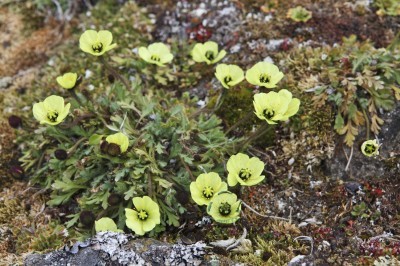






The tundra climate is one of the harshest growing biomes in existence. It is characterized by open spaces, drying wind, cold temperatures and low nutrients. Tundra plants must be adaptable, vigorous and tough to survive these conditions. Native northern plants are good choices for a garden in tundra type conditions. These plants are already adapted to the harsh, barren climate and short tundra growing season, so they will thrive without special interference. Read on to learn more.
Northern gardeners may find special challenges finding landscape plants that can exist in a tundra climate. Growing tundra plants enhances the landscape while providing foolproof greenery and diversity that will flourish without constant babying and special attention in such conditions.
Some suggested tundra gardening information might include:
In addition to the site and weather challenges in the tundra, the growing season is much shorter than other climates. The arctic tundra has a growing season of only 50 to 60 days, while the alpine tundra has a growing season of approximately 180 days. This means plants must achieve their life cycle in that allotted amount of time, and that includes flowering, fruiting and setting seed.
Plants that grow in the tundra are adapted to this shorter growing period and have much shorter cycles than those in long season climates. For this reason, you wouldn’t have much success growing a plant from USDA zone 8 in the tundra region. Even if it was cold hardy and adapted to the other extreme conditions, the plant wouldn’t have time to complete its cycle and would eventually die out.
Plants in the tundra develop superior resistance to unfavorable conditions. You can enhance the soil in your landscape with amending materials, such as compost, but the wind, moisture levels, cold and freezing points will still be the same.
ockeries can provide unique niches for a variety of plants while blending seamlessly with the native landscape. Rock gardens have several different micro-climates depending upon their light and wind exposure. Those with south-facing exposure and some cover can host more tender plants while exposed northern faces need to have only the hardiest specimens installed.
Growing tundra plants in sheltered locations can increase the diversity you can introduce to your landscape.
Cold season plants have many adaptations. They may have hollow stems that require less nutrients, low compact profiles, hairy stems and dark leaves to keep the plant warm and many other adaptations.
When choosing plants for your alpine or arctic landscape, take into consideration the site conditions you have to offer and the plants adaptability. Native plants will add the dimension for which you are looking while providing an economical and long lasting landscape.
Copyright © www.100flowers.win Botanic Garden All Rights Reserved